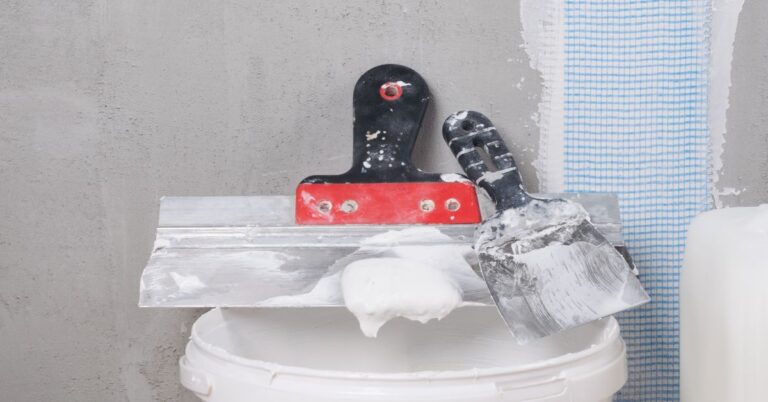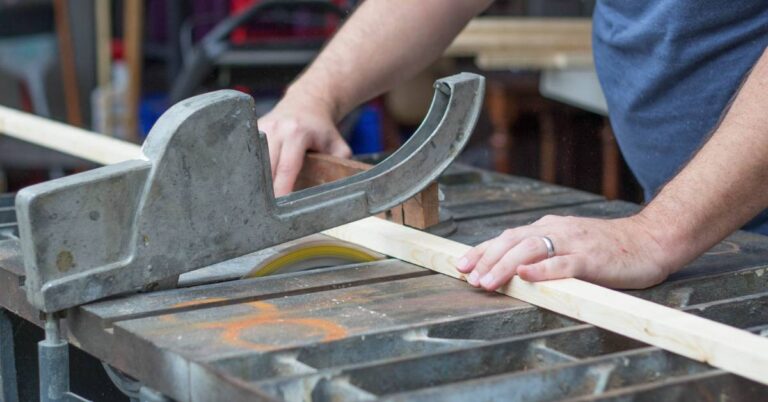Sawdust Be Gone: Top Table Saw Vacuum Choices For Cleanliness & Safety
Introduction
When it comes to woodworking, a clean and safe workshop is paramount for productivity and personal safety. One essential tool for maintaining this ideal workspace is the table saw vacuum. This article will guide you through choosing the best table saw vacuum to ensure a clean and safe workshop.
As seasoned woodworkers, we understand that sawdust can be both a nuisance and a hazard in a workshop. It can create slippery surfaces, cause respiratory issues, and even damage equipment over time. Investing in a high-quality table saw vacuum is wise for anyone working with wood regularly.
In our ultimate guide, we will cover a variety of table saw vacuums, from budget-friendly options to high-end models, and discuss various factors to consider when selecting the right vacuum for your unique needs. By the end of the article, you will have the knowledge and confidence to decide which table saw vacuum best suits your workshop.
Dust Collection Fundamentals
Dust Collection Systems
Dust collection is crucial to maintaining a clean and safe workshop, especially for woodworking projects where sawdust can accumulate quickly. We recommend choosing a suitable dust collection system for your table saw to ensure efficient capturing and containing dust particles.
There are two primary dust collection systems for table saws: centralized dust collectors and portable shop vacuums. Centralized dust collectors connect to several power tools in your workshop, while portable shop vacuums can be moved and connected to individual tools as needed.
When choosing a dust collection system, consider factors such as the size of your workshop, the number of power tools you use, and the amount of dust these tools generate.
Dust Collector vs Shop Vac
Dust collectors and shop vacuums both serve to collect sawdust and debris. However, they have different capacities and functionalities.
Dust Collectors:
- Designed for high-capacity sawdust collection
- Ideal for large workshops and heavy-duty tasks
- Typically quieter than shop vacuums
- Can connect to multiple power tools simultaneously
Shop Vacs:
- Portable and versatile, it easily connects to individual tools
- Suitable for small to medium-sized workshops
- Lower capacity compared to dust collectors
- Tend to be louder than dust collectors
To select the best option for your workshop, assess your specific needs. Large workshops producing significant sawdust might benefit from a centralized dust collector system. Smaller workshops or those with infrequent woodworking projects may prefer the portability and convenience of a shop vacuum.
By understanding dust collection fundamentals and assessing your unique workshop needs, you can confidently choose the best table saw vacuum for a clean and safe work environment.
Table Saw Vacuum Types and Brands
When keeping our workshops clean and safe, we always look for the best tools to do the job. One essential tool for maintaining a tidy workspace is a table saw vacuum. This section explores different types of table saw vacuums and discusses some reputable brands that manufacture them.
A few types of table saw vacuums cater to different needs. The most popular kind is the shop vacuum, a versatile option capable of handling various jobs around the workshop. Shop vacs often have a powerful motor to collect debris from table saws, mitre saws, and other power tools. Some widely known brands that produce reliable shop vacuums include Craftsman and Shop-Vac.
Another type of table saw vacuum is the dust collector. These systems are generally more robust and designed to remove dust and debris from table saws and other woodworking machinery. A dust collector usually consists of a large box with a filtration system and a motor, providing more powerful suction than a typical shop vac. Grizzly Industrial is a notable brand that produces high-quality dust collectors for home workshops and industrial settings.
Contractor saws are portable table saws with a built-in dust collection system. These saws may have a shop vacuum attachment or a specialized dust collection port for easy hookup to a dust-collecting vacuum. Popular brands for contractor saws with effective dust collection systems include DEWALT and Bosch.
When choosing a table saw vacuum, we must consider factors such as power, compatibility with our table saw, and the work we will do in our workshop. Investing in a reliable vacuum from a reputable brand that aligns with our needs is always a wise decision, as it will help maintain a clean and safe working environment.
By assessing different vacuum types and evaluating their features, we can make an informed decision that will best serve our workshop needs, ensuring the longevity of our equipment while maintaining a healthy, dust-free environment.
Key Features to Consider
When looking for the best table saw vacuum to keep your workshop clean and safe, there are several key features that you should consider. Firstly, the dust port is crucial as it connects the vacuum to the saw. Make sure it has the right size and type of connector to fit your table saw.
Dust collection ports should be designed efficiently to collect all debris generated during cutting. They should have sufficient openings and be placed strategically to prevent dust from spreading. The blade guard should also include an integrated dust collection system, as it will help manage the dust from the cutline.
The blade type in your table saw affects the amount of sawdust generated. Circular saws with more teeth tend to produce smaller, more manageable particles. Additionally, a vacuum with a good HEPA filter will ensure the captured dust particles stay in the vacuum and do not recirculate in your workshop.
Your table saw vacuum should have a flexible and durable vacuum hose that can easily connect to both the saw and the vacuum unit. Ensure the hose is long enough to allow free movement around your work area.
The suction power of the vacuum, often measured in cubic feet per minute (CFM) or horsepower, is essential to ensure efficient dust collection. For best results, choose a vacuum with enough power to handle the dust generated by your saw.
Some vacuums come equipped with remote control for added convenience. This can be useful for turning the vacuum on and off without walking over to the unit.
The ripping fence on your table saw should work seamlessly with the vacuum system and not obstruct its efficiency. It’s also important to consider the vacuum’s ability to handle bevel cuts, as the angle of the cut may produce more challenging dust patterns.
Lastly, consider the durability and affordability of the table saw vacuum. High-quality construction and materials can ensure a longer lifespan for your vacuum system, but balancing cost and performance is essential.
By keeping these key features in mind, you can make an informed decision about the best table saw vacuum for your workshop, ensuring a clean and safe environment while using your saw.
Table Saw Vacuum Accessories
The right table saw vacuum accessories are crucial when maintaining a clean and safe workshop. In this section, we’ll discuss a variety of accessories that can help optimize sawdust collection and ensure a tidy working environment.
An essential accessory for effective dust collection is a high-quality enclosure. Enclosures trap sawdust and debris within a confined area, preventing it from spreading throughout your workshop. Look for an enclosure designed specifically for your table saw model, as this will ensure a proper fit and optimal functionality.
Another helpful accessory is a table saw hood. These hoods attach directly to your table saw and help direct sawdust into your vacuum system. A well-designed hood can significantly improve the efficiency of your sawdust collection efforts.
While taking care of sawdust is essential, so is your safety. Investing in proper eye protection is necessary for anyone using a table saw. Select safety goggles or glasses that provide full coverage and are compatible with your other personal protective equipment.
When choosing materials for use on your table saw, consider their impact on sawdust production. For example, working with medium-density fiberboard (MDF) generates significant fine dust particles. Ensure your vacuum system is equipped to handle the type of materials you work with regularly or consider using alternative materials that produce less dust.
In conclusion, selecting the appropriate table saw vacuum accessories can go a long way towards maintaining a clean and safe workshop. With a proper enclosure, table saw hood, eye protection, and mindful material choices, and you can optimize your sawdust collection efforts and focus on your woodworking projects.
Optimizing Your Workshop Dust Collection
Keeping our woodshop clean and safe is crucial when working on a woodworking project. Optimizing our dust collection system is one of the most effective ways to achieve this. This section will discuss why and how to enhance our workshop dust collection.
A well-organized dust collector system effectively removes sawdust and debris, keeping the workspace clean and safe. This not only helps prevents accidents caused by slippery floors but also contributes to the overall health of our lungs by reducing airborne particles. Proper dust collection is essential when making multiple or repetitive rips, as sawdust accumulates rapidly.
When setting up an efficient dust collector system, take note of the following guidelines:
- Machine Positioning: Place machines that generate the most debris, such as table saws and planers, closest to the dust collector. This helps improve the efficiency of the dust collection process and reduces the amount of ductwork required.
- Dust Collector Size: Choose a dust collector with a sufficiently high airflow (measured in cubic feet per minute, or CFM) to handle your tools’ dust output. The combined CFM requirements should be considered if multiple machines are running simultaneously.
- Ductwork: Use smooth, rigid ductwork instead of flexible hoses whenever possible, as smooth surfaces create less friction and allow for more efficient dust collection. The shorter and more direct the ductwork, the better.
- Sealed Joints: Ensure all duct joints are properly sealed, as leaky joints can compromise the system’s efficiency. Use metallic foil tape or silicone caulk to create an airtight seal.
- Proper Ductwork Sizing: Use the appropriate duct sizes for your tools to maintain airflow and prevent clogging. Bigger ducts may be necessary for high-volume debris production.
- Air Filtration: Incorporate an air filtration unit in the ceiling to capture any airborne particles that escape the dust collection system. This will help improve the air quality and keep our lungs healthy.
Following these guidelines, we can successfully optimize our workshop dust collection system, ensuring a cleaner, safer work environment for all our woodworking projects.



